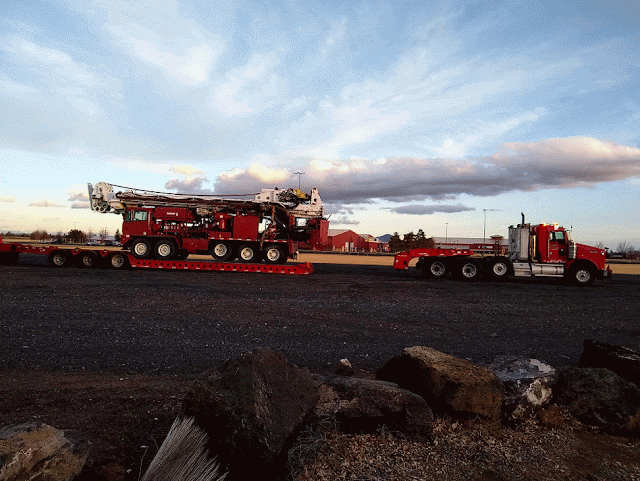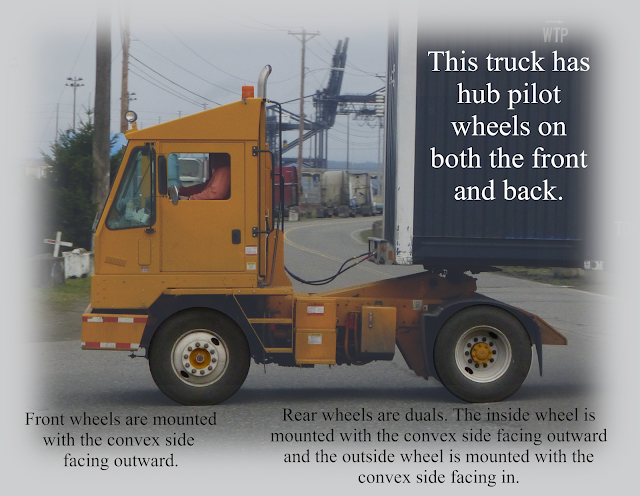 |
| Image: Dave Swift |
Pneumatic or "Dry bulk" tankers are used to haul powders and granular products. Many products that are transported in pneumatic tankers can also be transported in end dump, hopper or live floor trailers, but the pneumatic system has several advantages. These trailers are completely enclosed, keeping the load safe from contaminants, they don't have tip-over issues, and many facilities are dependent on this system to accept loads.
Common cargoes are foods like sugar and flour, cement ingredients, and potash.
The tank can be loaded two ways. Most often, they are gravity loaded through hatches at the top, but they can also be loaded through the bottom using the pneumatic system.
The pneumatic system works like a giant vacuum cleaner. It adds air to a tank to create an area of high pressure. When a valve is opened, the high pressure air naturally moves toward an area of low pressure (the destination tank), carrying the product with it. Aerators at the bottom of the hoppers also push air into the product, creating tiny spaces between the particles so that the product can flow efficiently. This same process can be used to load from a rail car or other tanks.
Some trucks are equipped with pumps while others rely on pumps at the unloading facility.
Pneumatic tankers come in several styles that operate in a similar manner. They all have some sort of hopper shape with a "product pipe" attached to the bottom of the hopper(s). The product pipe carries the product to its destination.
Watch a trucker explain the unloading process with only one PG word in a ten minute video below.
 |
Image: Dave Swift |

















